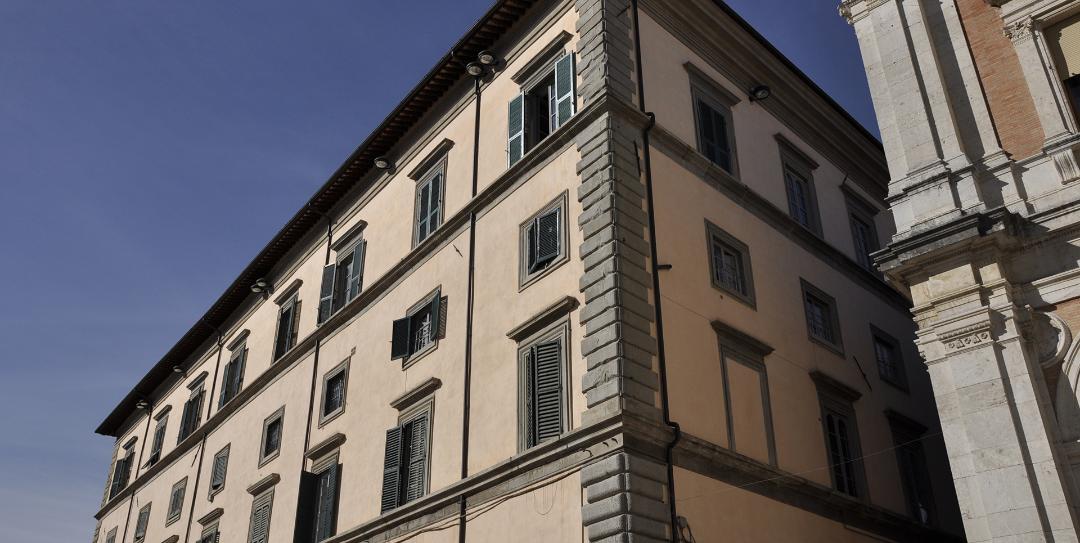Palazzo Vitelli alla Cannoniera
Palazzo Vitelli alla Cannoniera is one of the many palaces built by the Vitelli family in Citta di Castello, at the behest of Paola Rossi of San Secondo of Parma together with her husband Alessandro Vitelli, a Commander in the service of the Medici, "so that the memory of their name and their worth would not perish " and never be forgotten by the city". It was built between 1521 and 1532 in the historic centre by Antonio da Sangallo the Younger and Pier Francesco da Viterbo. The term 'cannoniera' or "gunboat" refers to the area where the palace was built, next to a cannon depository. The main façade is decorated with engravings designed by Giorgio Vasari. The palace garden was famous throughout Europe for its collection of exotic plants in the sixteenth century.






























